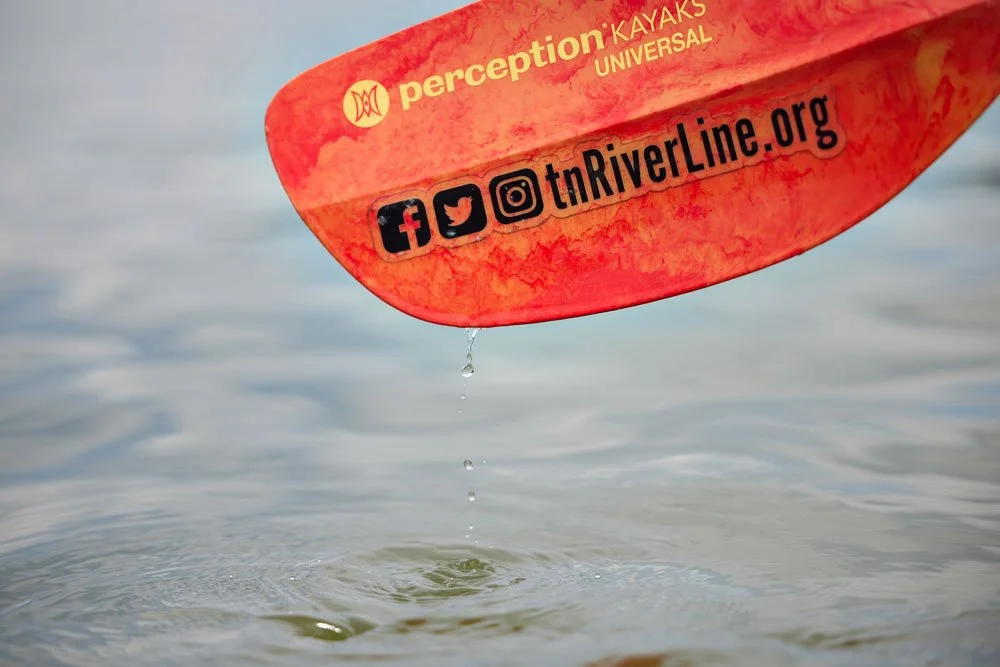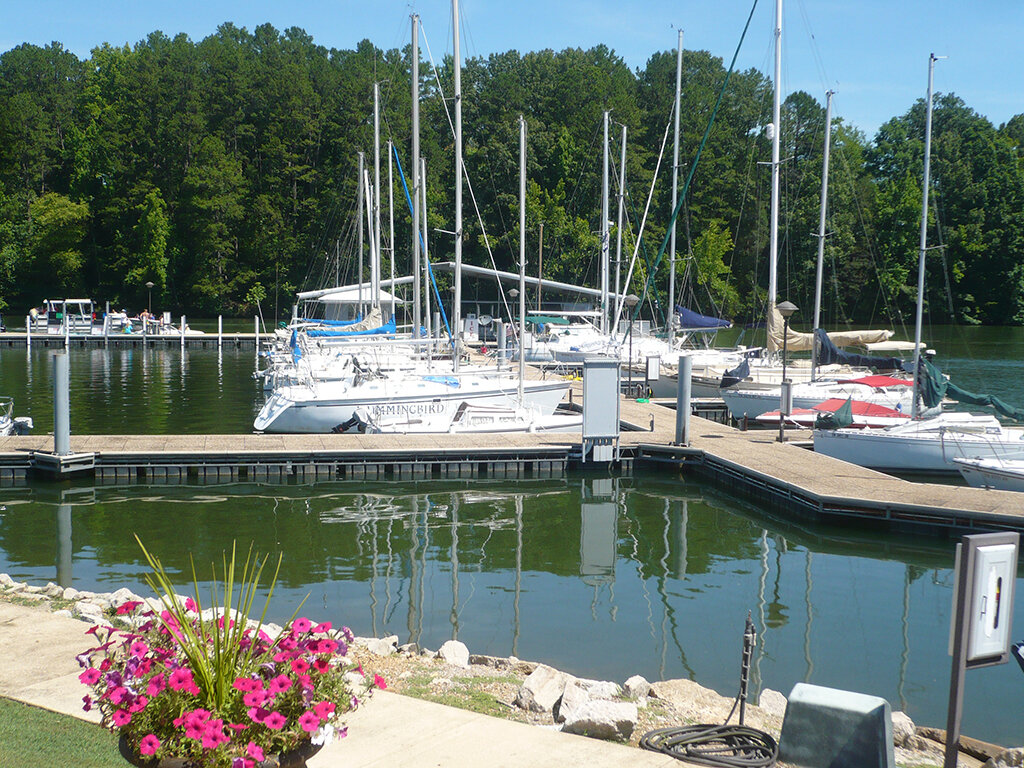Hardin County, Tennessee
by Tyler Kirkendall
Hardin County’s tagline “from catfish to cannonballs” could not be more fitting, as its history and contemporary lifestyle are steeped in Tennessee River traditions, from honoring Civil War heroes at its iconic battlefield, to pulling up and eating a piping hot whole fried catfish after a day paddling the Tennessee RiverLine.
Visit Hardin County!
Legendary Civil War History at Shiloh
The Battle of Shiloh, also known as the Battle of Pittsburg Landing, took place on the shores of the Tennessee River in Hardin County. At its end, the battle held the record for the bloodiest in American history, with 13,000+ Union soldiers reported lost and 10,000+ Confederates. A key turning point in the war, it is perhaps the single most important event in the history of the Tennessee River.
It is estimated that of the 77,000 soldiers who engaged in battle over Shiloh’s two-day stretch, only about 20% of them had previously fired their guns in a military context. Many didn’t know how to use their rifles even a day before Shiloh.
Public understanding has adopted legendary tales of the battle, and modern scholarship is challenging many of the assumptions we once had about iconic locations and figures including the Hornet’s Nest and Benjamin Prentiss. Historian Timothy B. Smith, a former ranger at Shiloh National Military Park, has published a great deal of writing dispelling Shiloh myths, especially ones pertaining to tourists’ favorite spots around Hardin County on the battlefield.
In March 1862, about a month before the battle, Major General Henry W. Halleck, the leader of Federal troops in the Mississippi Valley, directed his armies southward along the Tennessee River to meet Major General Ulysses S. Grant and some 37,000 Union troops at Shiloh Church near Pittsburg Landing in Hardin County. By the first days of April, Union Officer Don Carlos Buell was leading 25,000 soldiers to meet them there. The Tennessee River itself played a central role in this assembly, given Grant hadn’t intended to assemble there but was forced to thanks to unexpected high waters at their intended landing.
General Albert Sidney Johnston, meanwhile, began amassing Confederate troops in Corinth, MS, to strike at Shiloh Church before Buell arrived with reinforcements. Newspaper articles and modern retellings of Shiloh’s tale say that the Confederate attack was a surprise, but Smith reports that minor skirmishes led up to the battle and notes that the South’s advance was anticipated.
Union General C.F. Smith is reported as saying “By God, I want nothing better than to have the Rebels … attack us! We can whip them to Hell,” asserting that his men were so ready for a fight that they need not dig trenches to prepare for an incoming Southern army. Grant was ordered not to leave Shiloh to pick a fight with the bulk of the Confederate Army, so they sat tight until Colonel Everett Peabody took reconnaissance into his own hands and discovered advancing Southern forces at dawn on Sunday, April 6. A few hours later, it would become the first day of fighting at Shiloh.
Smith suggests that Peabody’s commander, Benjamin Prentiss, had a knack for taking credit for others’ efforts. Prentiss, who was furious with Peabody for disobeying orders to stay put, took credit for ordering his search after the war. Prentiss survived to tell the story; Peabody did not.
Prentiss also falsely took credit for leading Union forces to victory in the Hornet’s Nest, an iconic tract of battlefield where Northern troops held strong despite a massive demonstration of Southern force. According to Smith’s research, Prentiss’ 5,400 troops had become a mere 500 before 10 a.m. on the first day of battle in the Hornet’s Nest. Luckily, Brigadier General W.H.L. Wallace’s experienced regiments arrived to hold the Hornet’s Nest and protect the Union Line. Wallace did not live to tell his side of the story. Again, Prentiss did.
Northern forces mostly held their ground in the face of the Southern onslaught, despite dramatic accounts that Grant’s line was up against the ropes by nightfall on the first day of the battle. Grant’s command was in a strong defensive position buying time while it anticipated Buell’s reinforcements, but the Confederacy was not likely to overtake Grant’s line because it was holding advantages both in geography and artillery.
Next to the Hornet’s Nest was the Sunken Road, where Northern soldiers picked off endless droves of Rebel attackers. Smith revealed that this iconic location is steeped in myth as well, noting that the soldier first quoted for describing it as “sunken” likely wouldn’t have seen it during the battle, and accounts following his 1881 report continuously embellished the poor condition of the road. Visitors nonetheless love walking the iconic path today, sunken or not.
By the evening of Sunday the 6th, the first day of battle at Shiloh had already proved to be the bloodiest in America’s relatively young history. Ferries and steamboats coming up the Tennessee River brought about 25,000 men to reinforce the Union line before the end of the first night.
The second day saw fierce and deadly conflict before Confederate retreat, despite P.T. Beauregard’s telegraph report claimed the South had secured “a complete victory, driving the enemy from every position” after he took over for General Johnston, who was shot in the Hornet’s Nest.
Grant’s men pushed the Southern army out with immense force on Monday morning, and a retreat was in order from the iconic Peach Orchard and around Shiloh Church. The orchard would have been in full bloom for the battle in early April, making it a beautiful and somewhat poetic backdrop for the excessive bloodshed. When Grant pursued the retreating army, Nathan Bedford Forrest utilized his famous rallying capabilities and staved off further Northern attack.
The North had now claimed West Tennessee, and the South’s chances of winning the war became perilously slim.
It didn’t take long for the hallowed battlefield to become protected public territory, and within a few decades Shiloh National Military Park was set to become an attraction for visitors from around the country.
David Reed of the 12th Iowa fought in the Hornet’s Nest at Shiloh, and he ultimately became Shiloh National Military Park’s first historian when it opened 30 years after the battle. Smith asserts that Reed’s embellished memories of the Hornet’s Nest have had a lasting impact on the public’s understanding of the battle’s key moments and places.
No volume of faulty memories can diminish the breathtaking importance of key Shiloh locations that are still around for exploration today, however, including sites outside the park like the famous Cherry Mansion. The historic home served as General Ulysses S. Grant’s headquarters throughout the battle of Shiloh.
Significant figures, including Don Carlos Buell, C.F. Smith, and W.H.L. Wallace shared the space with Grant while they prepared for battle. Generals Smith and Wallace died from their wounds inside the mansion. The estate is still privately owned, but it’s possible to arrange tours with advance notice.
Hardin County Today
While Shiloh-related sites are the most famous attraction in Hardin County, there is plenty to see around the area outside of its Civil War history.
The county knows how to celebrate nature, and you never have to go far to find places to relax outdoors. Pickwick Landing State Park is a major attraction, and its outdoor offerings are among the best along the Tennessee RiverLine.
Located near TVA’s impressive Pickwick Dam, there are tremendous recreation experiences all over the park, including countless spots for fishing catfish, sauger, and a variety of bass throughout the year. The skies are as active as the water, and birding is another popular attraction for outdoor enthusiasts at the park.
The park offers rentals for a variety of paddlecraft to take out on Pickwick Lake. Its calm waters provide soothing relief during hot summers, and a tranquil escape during colder seasons. Boating and watersports also bring visitors and residents back out to the water year-after-year. Guests can even stay on site at the Lodge at Pickwick Landing, which offers rooms overlooking the river.
Pickwick Landing State Park has plenty of other outdoor amenities as well, including disc golf, traditional golf, a dog park, and public swimming beaches. A stroll along either its paved or unpaved hiking trails are a great way to explore the park’s 1,400 acres at a leisurely pace.
Hardin County offers the “Fit as a Fiddle Hiking Trail Challenge” for avid walkers who want to check out trails all around the county.
Downtown Savannah offers a charming historical downtown experience. Its Main Street often appears on lists of “hidden gems” across Tennessee thanks to its restaurants, shops, inviting spirit, and walkability. 42 historic homes can be found around its historic district, but they are private residences not open for tours.
The Tennessee River Museum in Savannah offers a unique lens for looking at the history of the Tennessee River watershed. From Native American artifacts, to weapons from the Civil War, all the way up to modern times, the museum offers a comprehensive look at the history of settlement across the Tennessee River. Be sure to finish up at the museum in time to catch the sunset on the river at nearby Wayne Jerrolds River Park.
Hardin County is home to a few famous and unique places to eat some good, old-fashioned Southern cooking. The first, Hagy’s Catfish Hotel Restaurant, is not actually a hotel at all. Claiming to be one of the oldest family-operated restaurants in the country, Hagy’s has operated in one form or another since 1825.
Originally a riverside shack used for storage of river-bound shipments, this spot evolved into a restaurant after years of catfish cookouts hosted by its owner. Its name came from visitors’ tendencies to need a place to sleep after spending the entire evening chatting and eating fish fillets until it was too dark to get back on the river. The original building burned down in 1975 and was replaced a year later with today’s structure.
The Outpost at Pickwick Lake & Dam offers more than just an old-school restaurant, it offers a full pioneer-themed experience. Its property includes and outdoor equipment rental facility, a classic-style general store, ice cream at the Frosty Mug Creamery, woodworking, and even a place to stay at The Prospector.
Nearby Saltillo Landing knows how to celebrate its river heritage, as it hosts Saltillo River Day each year in the fall. Events hosted at the festival help raise funds for improving river access and amenities within the community.
River heritage is a key part of Hardin County’s identity, making it a great representative of the Tennessee RiverLine at large. Its Civil War and river history, inviting Southern spirit, and outstanding comfort food offerings make it a perfect representative of what makes the region so special.


